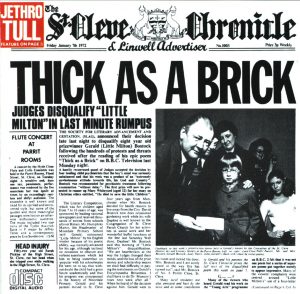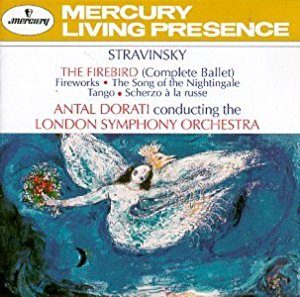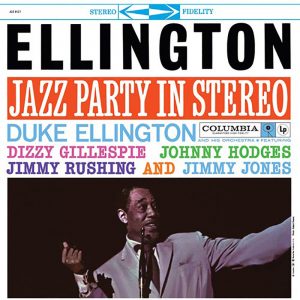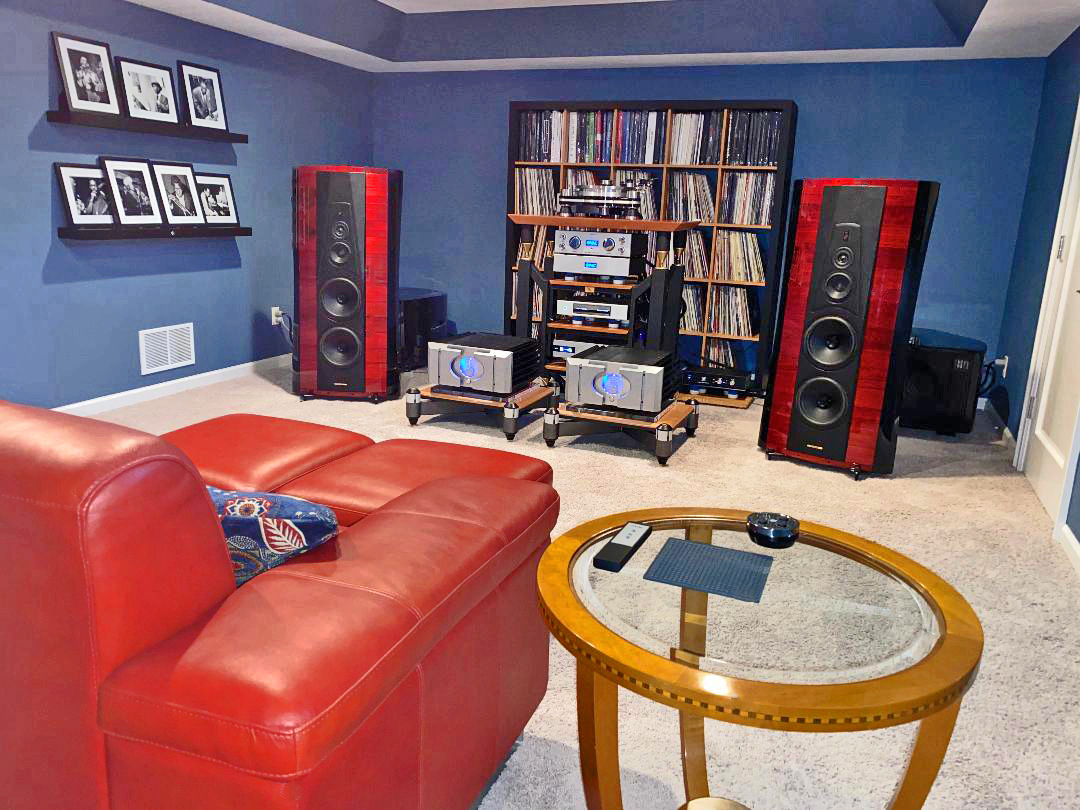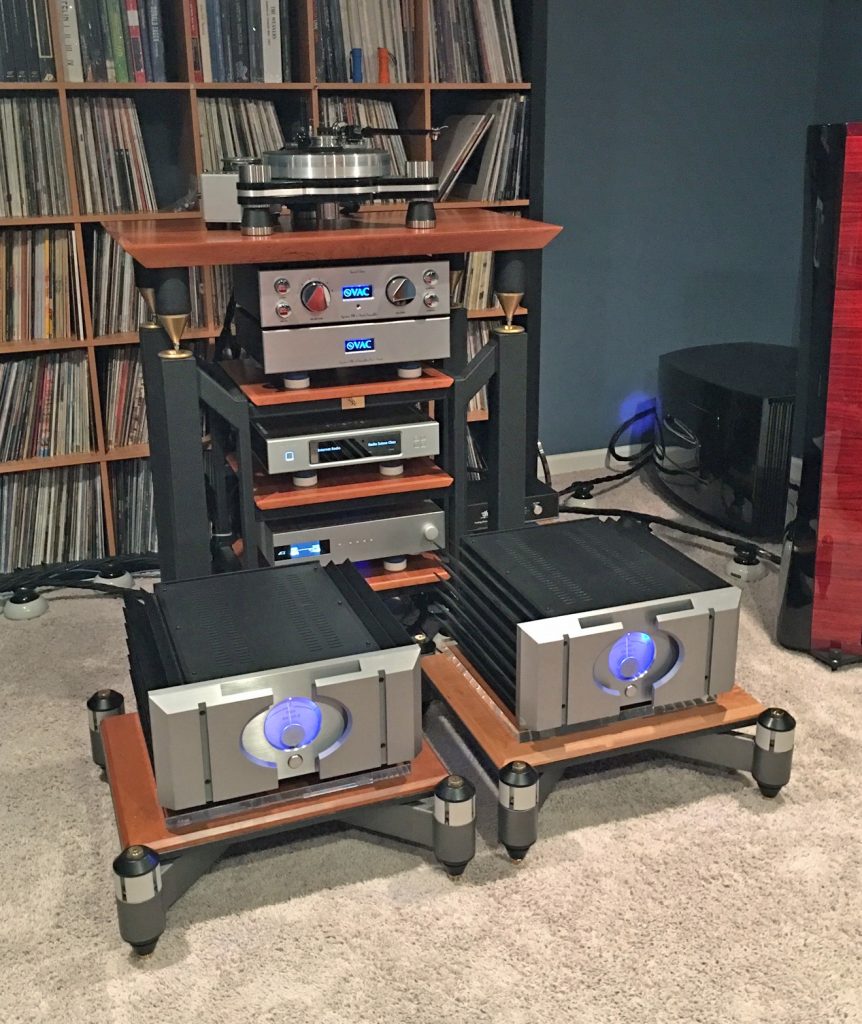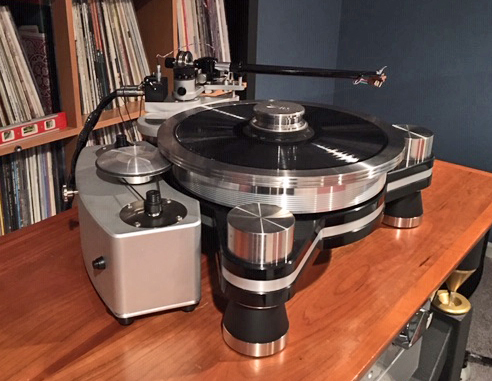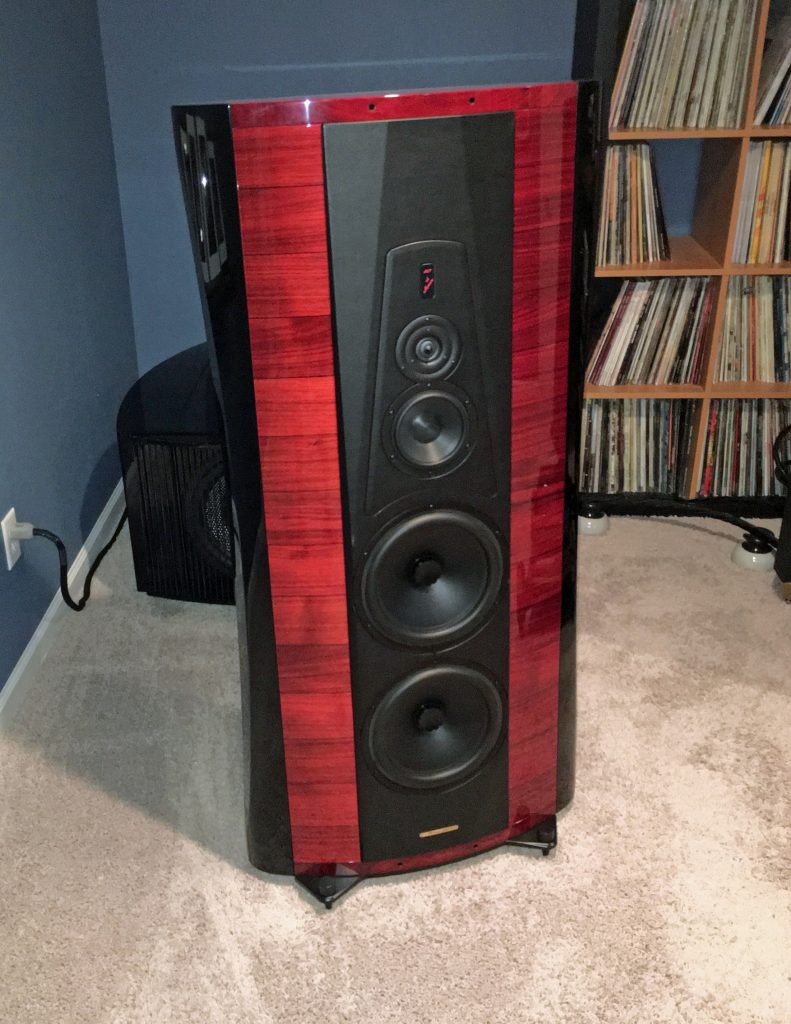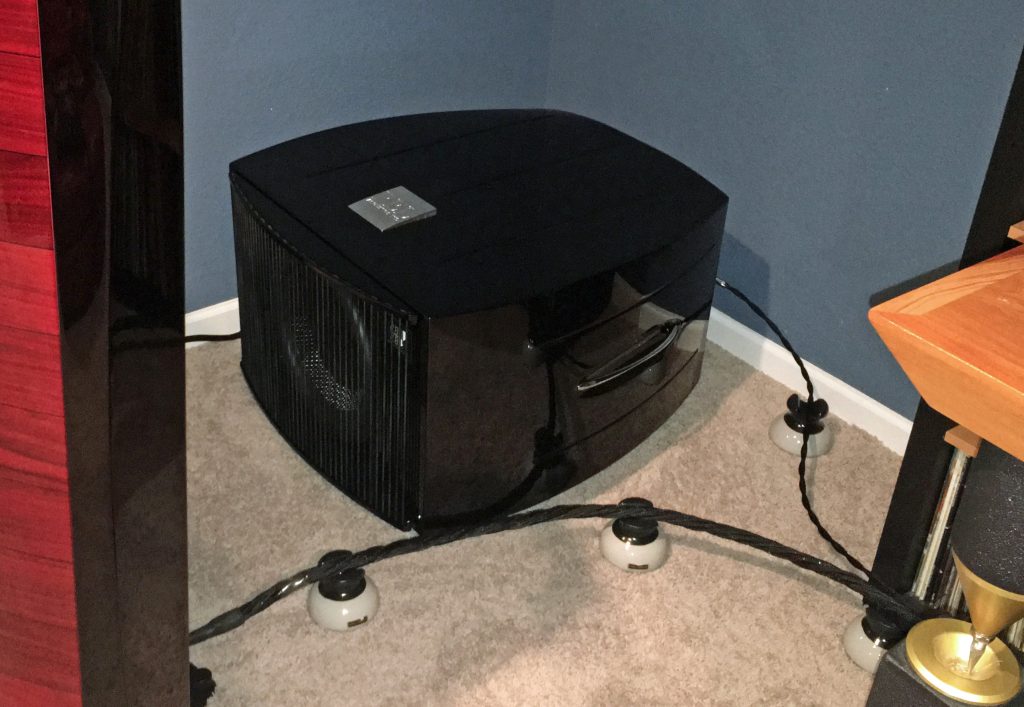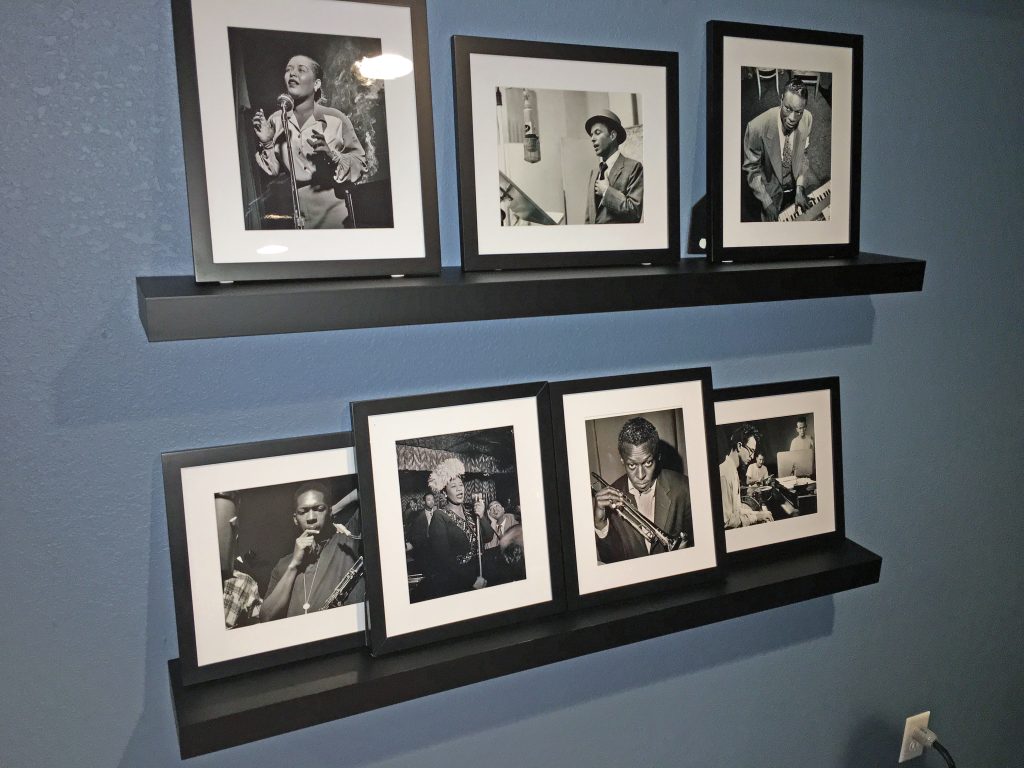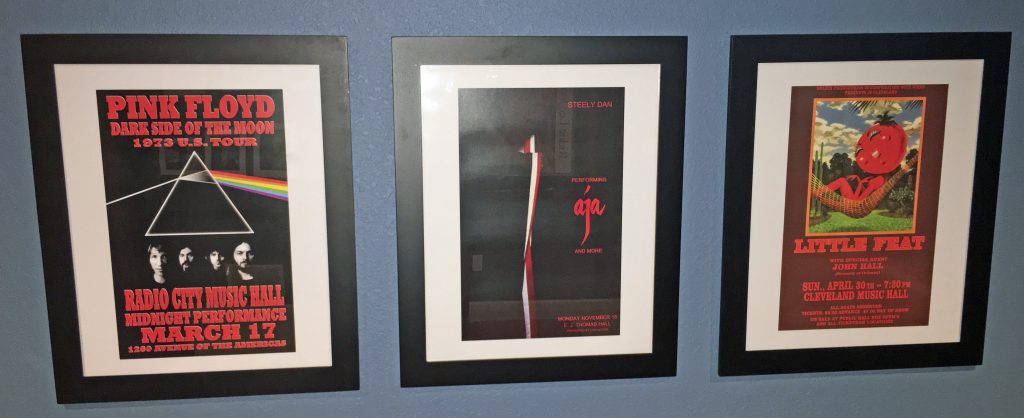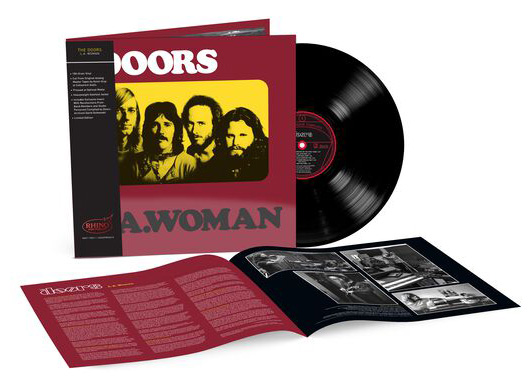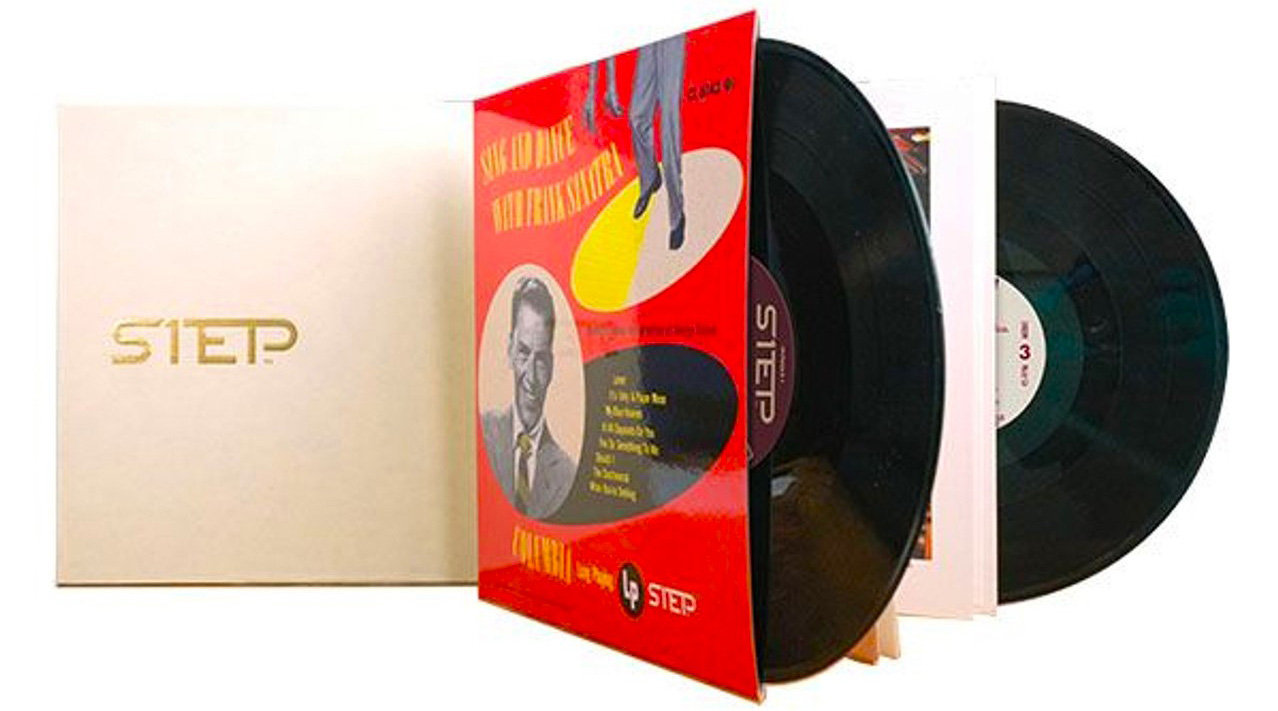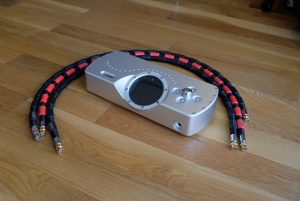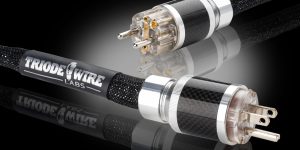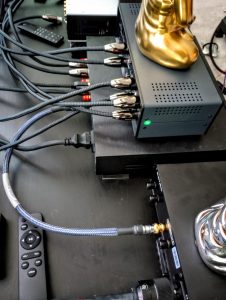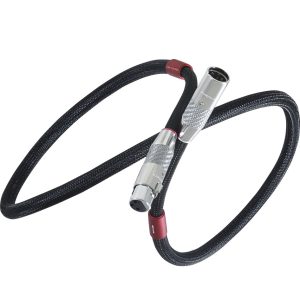Synergistic Research (SR) is at it again. Like Michael Corleone in Godfather III, "Just when I thought I was out, they pull me back in!" I am always on the lookout for something better. These days, with the quality of product available at all price points, there is a myriad of impressive options out there that are typically 'different" but not necessarily "better". Of course system compatibility and subjective priorities are keys, but in this case we do have something that I feel very comfortable describing as one of the very best.
In the last couple of years, I have reviewed the SR Element CTS and SR Atmosphere cable products. I found them both to be superior performers with the newer Atmosphere a true giant killer at a significantly lower price than the Element CTS (when does that ever happen?). I have also auditioned several models from Cardas, MIT, Transparent, Triode Wire Labs, and Marigo. Again, all were at different price points and evaluated with several different systems. All were big time performers. As expected, all had certain synergies (sorry for the pun) with some systems more than others.
I just wrapped up an extended trial with a full loom of Nordost Valhalla 2 which literally shocked me and redefined my expectations for cable (review soon to be published). I thought that the contest was over. However, I never had an opportunity to checkout the flagship SR Galileo UEF lineup. Until now. All I can say is my goodness and lookout Valhalla 2! One impressive characteristic of both the Valhalla 2 and Galileo UEF cables is that they both seem to perform well with a variety of components and systems with few if any exceptions.
Let's be clear. I have obviously not heard everything, but its been my experience that cable design has continued to evolve and in some very dramatic ways. We are all very fortunate that the bar keeps being set higher and higher with each new generation of product. As a consumer, the challenges are not as simple as you might think. Is the improvement in sound quality worth it? Can your bank account still afford it? I leave those determinations to you of course, but the SR Galileo UEF is one such product that is very worthy of your consideration!
Review Systems
System 1
- Sonus Faber Stradivari Loudspeakers
- REL No. 25 Reference Subwoofers
- Devialet 1000 Pro Integrated Amplifier
- VPI Avenger Plus Turntable
- VPI JMW 12-3DR Tonearm with Nordost Reference Wire
- Ortofon Cadenza Bronze Phono Cartridge
- Esoteric K-01X SACD/CD Player
- Aurender N10 Music Server
- Synergistic Research Element CTS Cable throughout
- Synergistic Research PowerCell 10 UEF Power Conditioner
- Synergistic Research FEQ PowerCell Equalizer
- Rix Rax Hoodoo Component Rack
- Magico QPod Footers
System 2
- Magico S5 Speakers
- Audio Research Reference 5SE Preamplifier
- Audio Research Reference 150 Stereo Amplifier
- Audio Research Reference PH-7 Phono Stage
- VPI HRX Turntable
- VPI JMW 12.6 Tonearm
- Van den Hul Condor Cartridge
- Bryston BDA-3 DAC
- Aurender N-10 Music Server
- Synergistic Research Atmosphere Cable Throughout
Caveat Emptor
System synergy and personal taste are critical when evaluating high-end audio products. This review is based on my subjective requirements, my subjective ears, my specific system, and my specific listening room. This combination is only one data point of many that exist out there for these components. Please consider my comments and analysis appropriately.
Design
For this first review, I have decided to focus on the SR Galileo UEF AES/EBU digital cable rather than look at power cords, interconnects or speaker cable. Digital needs can be quite unique, so please stay tuned for additional evaluations.
Like all the models in the Galileo UEF portfolio, the AES/EBU cable is made by hand in the SR California factory. Fit and finish are outstanding. The level of detail and execution is evident from the first time you pick up the cable and make your initial inspection. This baby weighs a ton and looks the part as expected from past SR designs and as a flagship offering.
There is much going on here with plenty of innovative new design. Complex geometries are utilized including pure 99.9999% Silver with Teflon and air dielectrics. For me, the key differentiators are the use of carbon fiber, graphene and the Galileo tuning modules. Like past SR designs, the Silver and Gold tuning modules can be used to voice and fine tune your digital cables to match your system needs. Over time, I have found these options extremely useful as my system has evolved.
Lastly, SR includes a "Cable to Ground Connector" or can provide an optional "Ground Block" that will lower your systems noise floor and implement a very sophisticated grounding system to improve performance even further. Please see the SR website for more detailed information on all of the above features.
Sound
I let the Galileo UEF burn in 24/7 for two weeks without any serious listening. Just a pop in on occasion to make sure that my Aurender N-10 music server was still rotating through the various titles. Digital anything can be a roller coaster ride for burn in and I did not want any second guessing later in the process.
When I finally sat down to evaluate, I could tell something was different from the first note. There was a sense of unfiltered and unprocessed natural clarity to the sound. The noise floor was so non-existent and deeply black that the level of detail and individual notes just seemed to pour out from the Sonus Faber Stradivari speakers, but with a liquidity and ease that was new to my ears.
There was also a certain amount of body and physical presence that had me sit up straight and lean in for everything from acoustic bass to alto saxophone. This thing about proper weight and texture has taken on a new meaning for me and is one of the reasons that I am now enjoying my new Strads so much. The Galileo UEF just reinforced it.
Yes, you want to feel the timbral purity and the full bodied harmonics, but you don't want to loose any of the complexity and dimension of the individual instruments. That goes especially for male and female vocalists. The Galileo delivers.
Speed, dynamics, transparency—it's all there in spades without sacrifice and even with the above improvements. I can't say that the soundstage expanded or that individual instruments locked in any more than my other established benchmarks. There was just a new level of organic purity to the sound that allowed me to take it all in without too much thinking. Just listen and absorb. A very nice combination these days when typically, I seem to be critiquing every nuance that is presented.
Bass had tremendous depth with superb levels of authority and dynamic punch. Highs had a seductive air and openness along with a delicate level of sweetness. Mids had a rounded and natural bloom that digital rarely provides. Yet even with these descriptives, the music was alive and immediate at all frequencies. Goose bumps were easily raised at virtually every listening session. All in all, an absolutely lavish and expressive execution.
As I said, the Nordost Valhalla 2 is also a strong contender. It was actually very very difficult to identify the correct cable in a head to head comparison. If there was a gun held to my head, I would say that the Galileo UEF had slightly more harmonic structure and tone. The Valhalla 2 was slightly more dynamic and agile. But again, this difference was very subtle if discernible at all. As mentioned earlier, one advantage that the Galileo UEF can provide are the Silver and Gold tuning circuits that allow you to voice the cable for your system needs. I started with the Silver and never looked back, but your system might like the additional flexibility.
I also want to point out that I did listen to the Galileo UEF in a friend's system that I am very familiar with. If you follow my reviews, you will note that I have utilized this system as an additional data point in several other evaluations. It consists of components from Audio Research, Bryston, Aurender, and Magico. See the System 2 description above. I also brought over my Esoteric K-01X for an additional comparison. Everything stated above for my system was pretty much verified. Whether it be the Aurender N-10 connected to my Devialet 1000 Pro, the Esoteric K-01X, or the Bryston BDA-3, the results with the Galileo UEF were very consistent.
Music
Jethro Tull, Thick As A Brick (HDtracks 96/24 WAV Downlaod)
TAAB was originally released with much fanfare on the Chrysalis label in 1985. This reissue is available on HDtracks as a 96/24 WAV download and was remastered by the renowned Steven Wilson in 2012 (check out his Led Zeppelin remasters). Many Jethro Tull die hearts consider this effort as the best ever from the group, even beyond the infamous Aqualung. Legend has it that TAAB was a tip of the hat to the many progressive rock bands of the era. Others claim that it was a display of total disrespect to the very same genre. Either way, IMHO the music is superb!
With song writing contributions and masterly interplay from all the band members, Ian Anderson still shines brightly as the main star here. His irrepressible flute solos and unique vocals seem to wind in and out of the melodies with a whimsical and brilliant rhythmic drive like no other front man or woman in Rock 'n' Roll.
Yes, this remaster is a killer, but the Galileo UEF brings each and every track to an astonishing level of clarity and with a wonderful new burst of life. The title track is especially engaging. When Jeffrey Hammond on bass kicks in at several critical points, your system will explode with authority and power. Martin Barre's electric guitar is well defined and properly fleshed out as he seems to float on air throughout the recording.
This is one of my all time fav albums and I listen to it often. This time around I was quickly transported back to another time and place at Assembly Hall in Champaign Urbana and the University of Illinois. Yes, I was just a young undergraduate back then but Ian Anderson and his stately pirouette left quite an impression that still lives on today through this recording.
Stravinsky: The Firebird (Complete Ballet). Antol Dorati and the London Symphony Orchestra (Acoustic Sounds DSD Download)
Another audiophile favorite, The Firebird on the Mercury Living Presence label was recorded in Watford Town Hall just outside of London and released in 1959. Antol Dorati and the London Symphony Orchestra were at the peak of their powers. As was the recording engineer C. Robert Fine, who along with his wife Wilma Cozart Fine made the Mercury Living Presence series one of the most respected and revered in recording history. This release has also been a long time favorite on the TAS Super LP list as recommended by Harry Pearson.
Well, I have owned or heard this title on virtually every format imaginable except reel to reel tape (and the rumor mill for that seems to be gathering some momentum). This DSD download can compete with any of them and in some respects it might just exceed your past benchmarks. I don't want to get into a PCM vs. DSD vs. LP discussion here, but this DSD transfer is simply outstanding and takes me one step closer to the real event.
The Galileo UEF plays a strong part in this realization. Some of the hardness that many complain about in the upper midrange of the CD and even the LP reissues are not present here. Woodwinds, brass and strings are unleashed within a wonderful three dimensional stage of lifelike presence and richness of color.
My favorite is the "Infernal Dance of King Kashchei". As this movement ramps up you will soon be surrounded by a mesmerizing cavalcade of sound from every direction. You can't help but wonder and dream about the fate of Prince Ivan, Kashchei the Immortal and the Firebird. The music will just grab and pull you through the emotional exchange. Electrifying stuff!
Duke Ellington, Jazz Party (Acoustic Sounds DSD Download)
Jazz Party was the last Duke Ellington release on the Columbia label before his contract was unexpectedly terminated and he moved on to Reprise. This truly was an all star jazz party with some of the best musicians of the time including Dizzy Gillespie, Jimmy Rushing, Ray Nance, Paul Gonsalves, Johnny Hodges, Clark Terry, Jimmy Jones, and over a dozen more.
With the Galileo UEF leading the way, the sound is an absolute sonic spectacular. The opening track entitled "Malletoba Spank" by Billy Strayhorn will really knock your socks off. This includes a wild ride across a deep and spacious big band soundstage that includes marimbas, xylophone and kettle drums. You will soon find yourself shaking your head and smiling from ear to ear as Ellington's score and direction serve like no other. The layers and layers of detail and the rich sonic texture of each instrument are almost startling.
Another Billy Strayhorn composition entitled "U.M.M.G." (Upper Manhattan Medical Group) is my favorite with an amazing trumpet solo by Dizzy Gillespie. Intense and inspired, you get the very best combination of swing and improvisation. Rich and tasty, you also get the proper golden blatt and visceral excitement that only Diz can provide on trumpet. Yes, this is digital, but DSD and the Galileo UEF get it right. An absolute classic!
Final Thoughts
Synergistic Research continues to inspire and delight. Never standing still, the new Galileo UEF AES/EBU cable with it's innovative design elements that include the use of carbon fiber, graphene and the latest generation of tuning modules has taken the sound of my system to another level. I continue to marvel at how far the state of the art in cable design has evolved in just the last few years. So far, the Galileo UEF stands firmly at the top of my review highlights list for 2017. Strongly recommended!
Galileo UEF AES/EBU (XLR) Digital Cable
Retail: $3495 MSRP
Synergistic Research
17401 Armstrong Avenue
Suite 102
Irvine, CA 92614
800.578.6489





